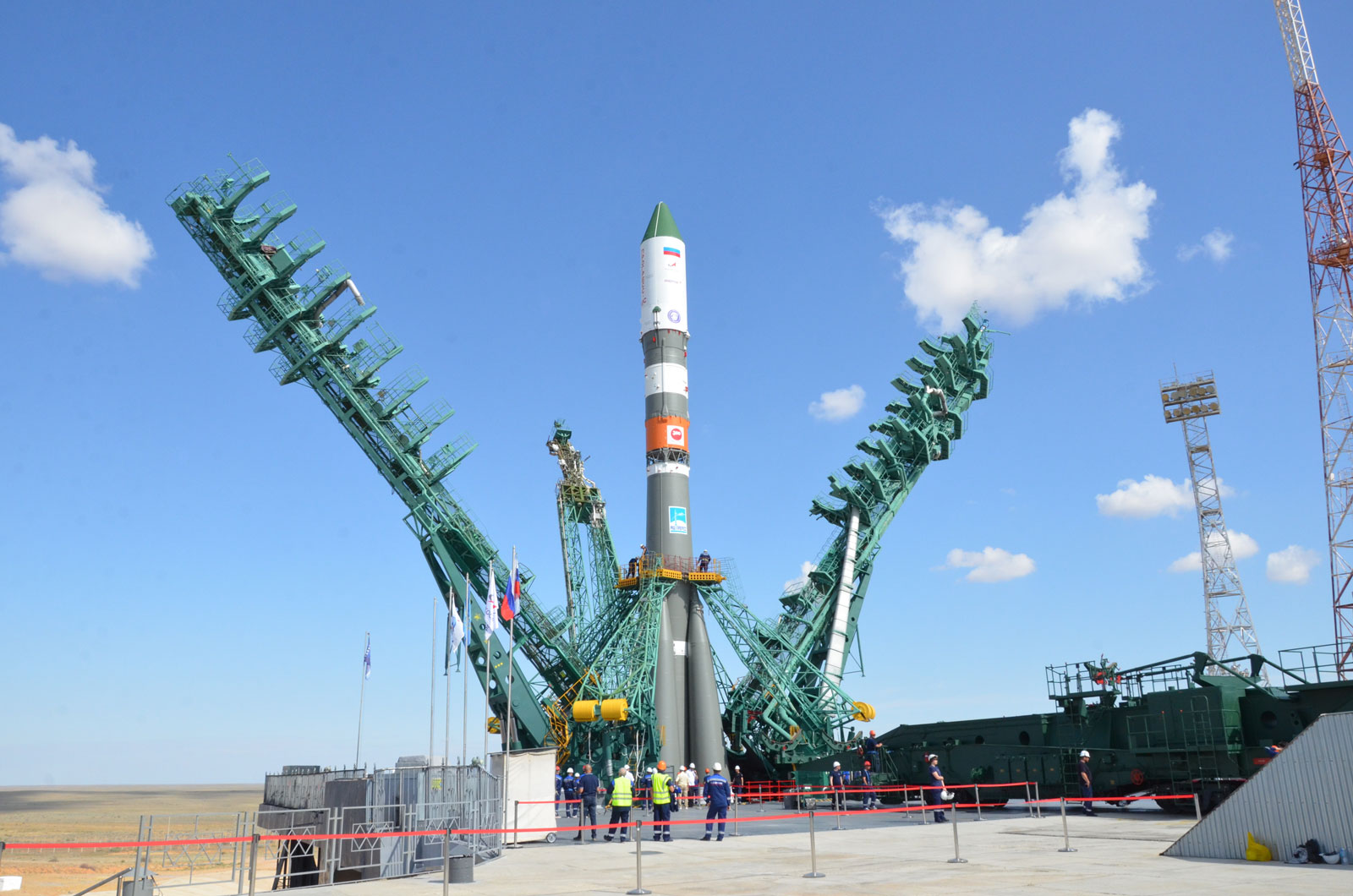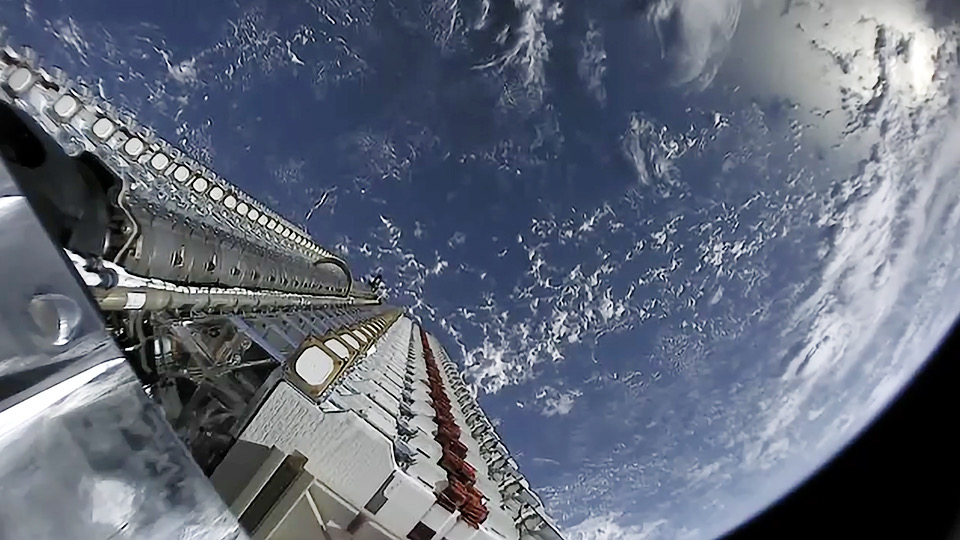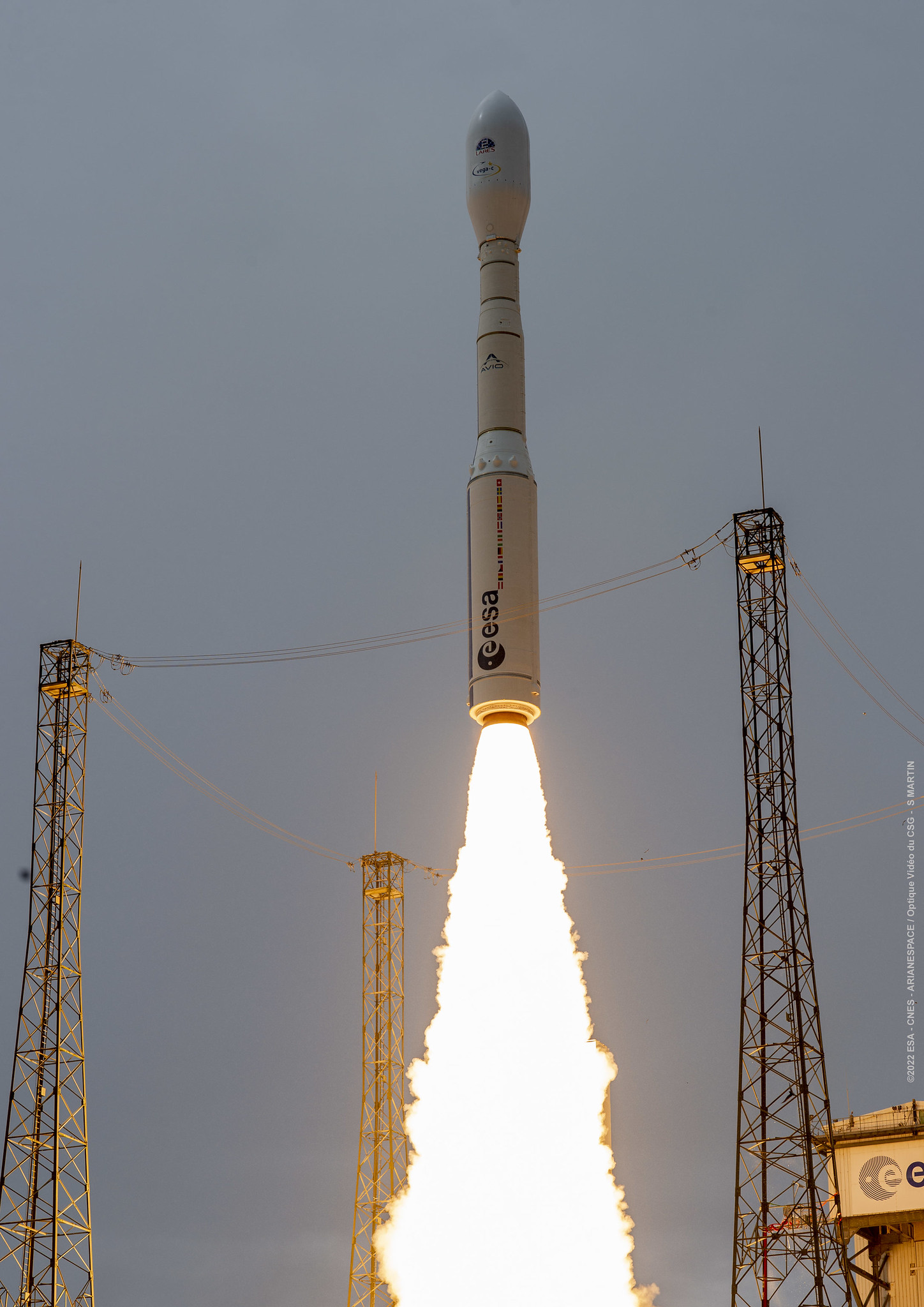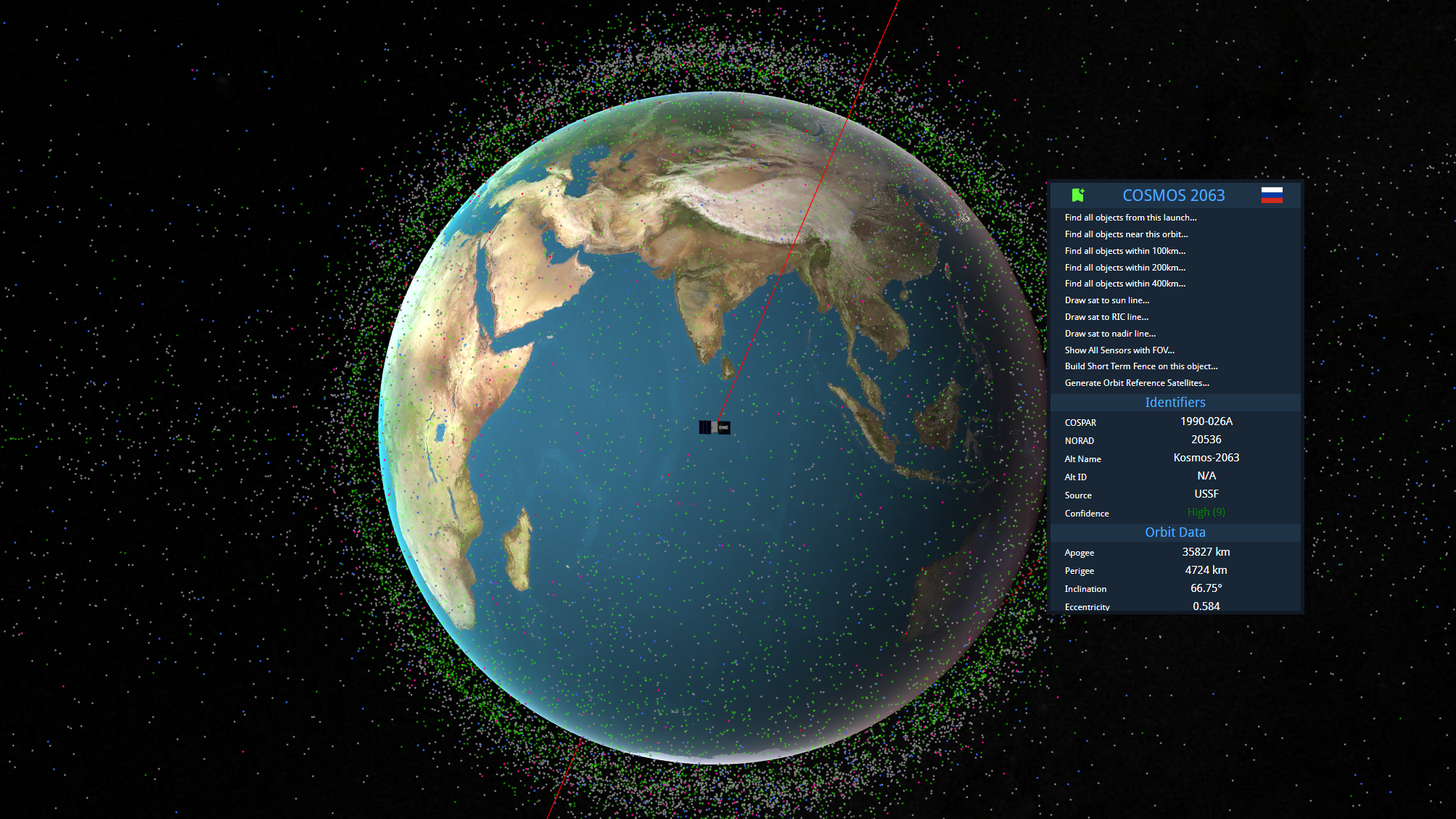· space brief · 6 min read
Space Brief 6 Aug 2025
Highlights of today's Space Brief include advancements in missile defense systems, a historic lunar project by NASA, and strategic military investments in satellite technology.

📄Top Stories
Today’s top stories focus on important advancements in space-based missile defense systems by Northrop and Lockheed Martin. NASA announces its ambitious plans to install a nuclear reactor on the moon by 2030. Additionally, significant strategic movements are being made by SES in the European defense market.
📰Detailed Coverage
Northrop’s Strategic Boost in Missile Defense
Northrop Grumman has announced substantial investments aimed at enhancing its missile defense capabilities, with a particular focus on its solid rocket motor technology. This move is aligned with the anticipated demand for Golden Dome missile defense systems, showcasing Northrop’s commitment to strengthening national security through advanced aerospace technologies.
The company’s strategy centers around expanding its solid rocket motor production to meet future defense needs. This capability is expected to play a crucial role in the deployment of reliable missile defense systems, ensuring that national security infrastructure remains robust against evolving threats in space and on Earth.
Read the full story: SpaceNews
Lockheed Martin Aims for a 2028 Space-Based Interceptor Demo
Lockheed Martin has set a target date of 2028 to demonstrate its space-based missile interceptors, posturing itself as a key player in the development of a comprehensive homeland shield. The company plans to leverage its existing missile defense portfolio to enhance the United States’ capacity to neutralize threats from space.
This initiative aligns with broader national security measures, underscoring the importance of space technology in modern defense strategies. Lockheed’s focused approach demonstrates how advancements in satellite technology can provide strategic defense advantages, offering new capacities for tracking and neutralizing potential threats.
Read the full story: SpaceNews
NASA’s Ambitious Lunar Reactor Plans
NASA has announced its goal to establish a nuclear reactor on the moon by 2030, marking a significant step towards long-term lunar habitation. This strategic effort aims to provide a reliable power source for future lunar missions and potential human settlements on the moon.
The lunar reactor is expected to revolutionize how space missions are powered, offering a sustainable energy solution in the challenging environment of space. This development is crucial for upcoming missions that rely on stable power sources for extended operations, highlighting the critical link between technological innovation and exploration success.
Read the full story: Space.com
SES Expands Defense Market Strategy with Intelsat Acquisition
SES’s acquisition of Intelsat marks a strategic expansion into the European defense market. With this move, SES aims to enhance its capabilities in providing satellite communications services, strengthening its position as a key player in global defense infrastructures.
The integration of Intelsat’s resources allows SES to offer more comprehensive services to defense clients, including the US Army, under its new Sustainment Tactical Network contract. This expansion underscores the significance of satellite technologies in supporting military operations and highlights SES’s growing influence in secure communications.
Read the full story: Breaking Defense
Nordic Nations Fund US Weapon Provision to Ukraine
In a significant geopolitical development, Nordic countries have pledged $500 million for U.S. weapons supply to Ukraine. This collaborative effort reflects a broader international strategy aligned with U.S. military support to bolster Ukraine’s defense capabilities in the ongoing regional conflicts.
This investment highlights the strategic importance of transatlantic cooperation in enhancing European security and illustrates how military alliances leverage satellite and defense technologies to adapt to contemporary threats.
Read the full story: Breaking Defense
U.S. Department of Defense Withdrawal from Australian Forum
The U.S. Department of Defense’s recent decision to exit a defense forum in Australia has raised concerns among international security experts. The abrupt cancellation is seen as a setback for strategic dialogue between the two nations amid growing regional tensions.
This development highlights the delicate balance in global defense diplomacy and signals potential shifts in strategic alliances, emphasizing the critical nature of communication and cooperation in defense planning.
Read the full story: Breaking Defense
🛰️Satellite Spotlight
- Satellite Name: LEMUR-2-JINDRA
- NORAD ID: 46909
- Launch Date: November 7, 2020
- Mission: LEMUR-2-JINDRA is part of the Lemur constellation that provides global data for various applications, including GPS radio occultation and Automatic Identification System (AIS) for maritime tracking.
- Orbit: Low Earth Orbit (LEO)
- Operator: SPIRE
- Fun Fact: This CubeSat has a unique ability to collect GPS data for weather forecasting, making it valuable for both commercial and scientific applications.
Track this satellite in real-time on our web app: Track LEMUR-2-JINDRA
🌌Space Weather
Space weather conditions are currently quiet.
Current
R0 - S0 - G0
Last 24 Hour Maximums
R1 - S0 - G0
Recent Alerts
- A 10 cm Radio Burst occurred on August 5, indicating significant radio noise associated with a solar flare, which may affect sensitive communication systems.
- Type IV Radio Emission reported as associated with major solar activity on August 5, indicating strong coronal mass ejections.
- Type II Radio Emission also detected on August 5, suggesting a potential coronal mass ejection linked to an eruption on the sun.
Next 24 Hours
-
Radio Blackouts Probability
- Minor: 50
- Major: 10
- Risk: None
-
Solar Radiation
- Probability: 5
- Risk: None
-
Geomagnetic Storming
- Scale: 0
- Impact: none
- Activity: Low
-
Impact Summary
- Next 24 hours: No risk of radio blackouts.
- No risk of solar radiation storms.
- Geomagnetic outlook: No G1 (Minor) or greater geomagnetic storms expected.
- No significant solar wind features forecast.
- No significant active region activity favoring radiation storm production.
Long Term Forecast
- Solar activity is expected to remain mostly low with chances for M-class (R1-R2, Minor-Moderate) flares from August 4 to 30.
- Proton events are not anticipated at geosynchronous orbit.
- Greater than 2 MeV electron flux is expected to be high on August 12-18 and 21-28 due to recurrent coronal hole high-speed stream (CH HSS) influences.
- Geomagnetic activity may reach G1 (Minor) storm levels on August 11-15, 18-22, and 25-30, with quieter levels expected on other days.
🚀Upcoming Space Launches
August 7
- SpaceX Falcon 9:
- Project Kuiper (KF-02) from Cape Canaveral (14:01 UTC) Second of a three-launch contract for Amazon’s Kuiper low Earth orbit satellite internet constellation. 24 satellites are on board.
August 8
- China Rocket Co. Ltd. Smart Dragon 3:
- Unknown Payload from Sea Launch (16:21 UTC) Details TBD.
August 10
-
SpaceX Falcon 9:
- Starlink Group 17-4 from Vandenberg SFB, CA, USA (02:05 UTC) A batch of 24 satellites for the Starlink mega-constellation - SpaceX’s project for a space-based Internet communication system.
-
SpaceX Falcon 9:
- Starlink Group 10-20 from Cape Canaveral (12:16 UTC) A batch of 28 satellites for the Starlink mega-constellation - SpaceX’s project for a space-based Internet communication system.
August 12
- United Launch Alliance Vulcan VC4S:
- USSF-106 from Cape Canaveral (23:59 UTC) The mission for the United States Space Force will deploy various payloads, including the NTS-3 navigation satellite.
August 13
-
Arianespace Ariane 62:
- Metop-SG A1 from Guiana Space Centre, French Guiana (00:37 UTC) First of EUMETSAT’s second generation of Metop weather satellites.
-
SpaceX Falcon 9:
- Starlink Group 10-11 from Cape Canaveral (12:41 UTC) A batch of 28 satellites for the Starlink mega-constellation - SpaceX’s project for a space-based Internet communication system.
-
SpaceX Falcon 9:
- Starlink Group 17-5 from Vandenberg SFB, CA, USA (15:44 UTC) A batch of 24 satellites for the Starlink mega-constellation - SpaceX’s project for a space-based Internet communication system.
August 17
- SpaceX Falcon 9:
- Starlink Group 17-6 from Vandenberg SFB, CA, USA (00:00 UTC) A batch of 24 satellites for the Starlink mega-constellation - SpaceX’s project for a space-based Internet communication system.
August 20
- ROSCOSMOS Soyuz 2.1a:
- Bion-M No. 2 from Baikonur Cosmodrome, Republic of Kazakhstan (17:13 UTC) Bion-M is the next generation of Russian biological research satellites with an increased mission duration of up to 6 months.
Note: Launch dates and times are subject to change due to technical or weather considerations.

Maurice Stellarski





